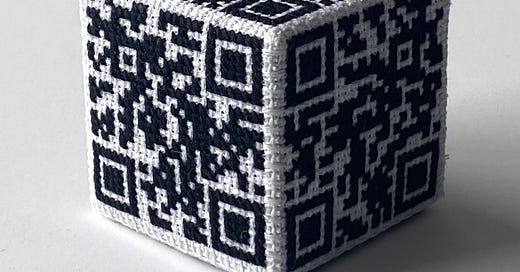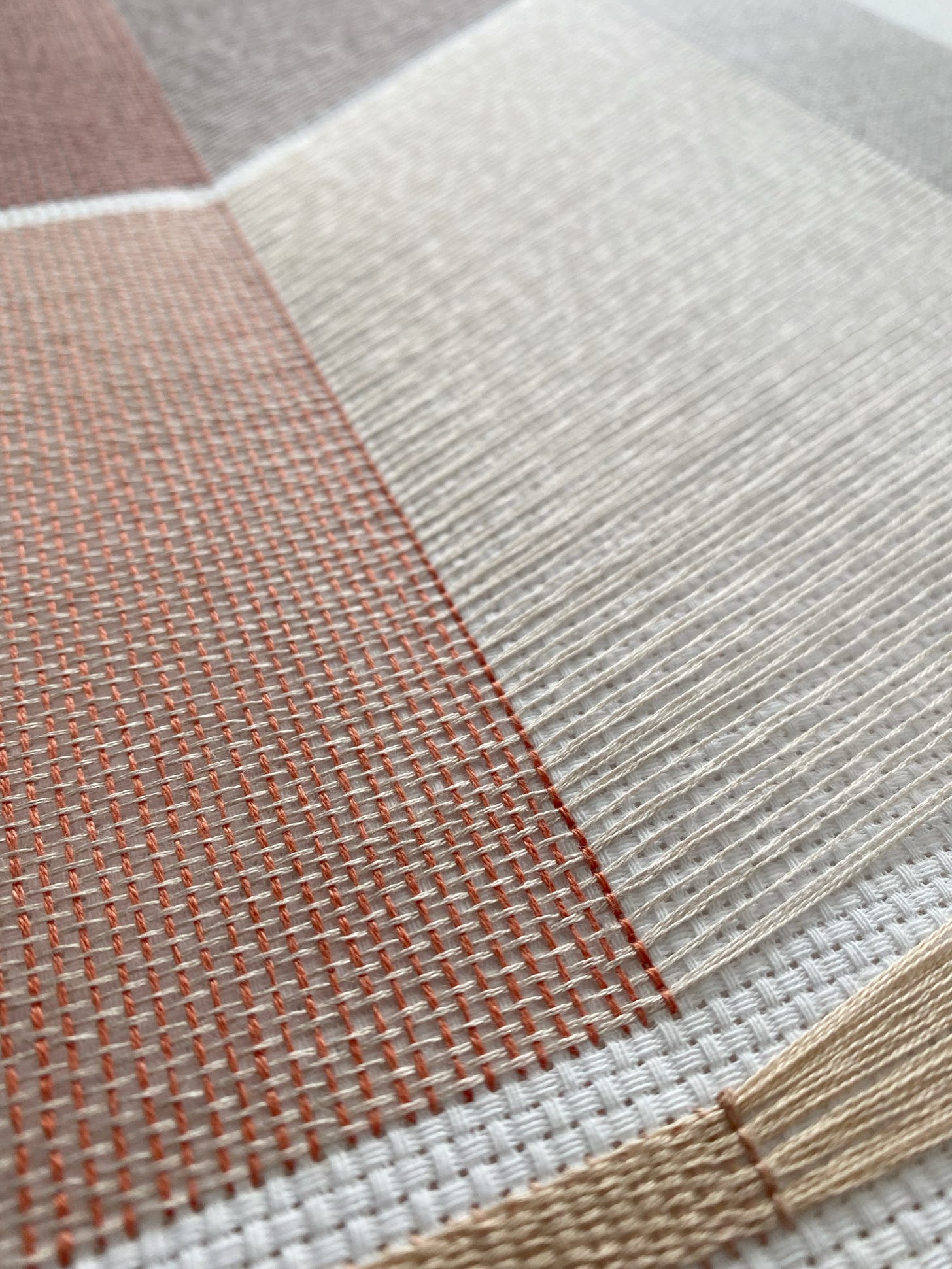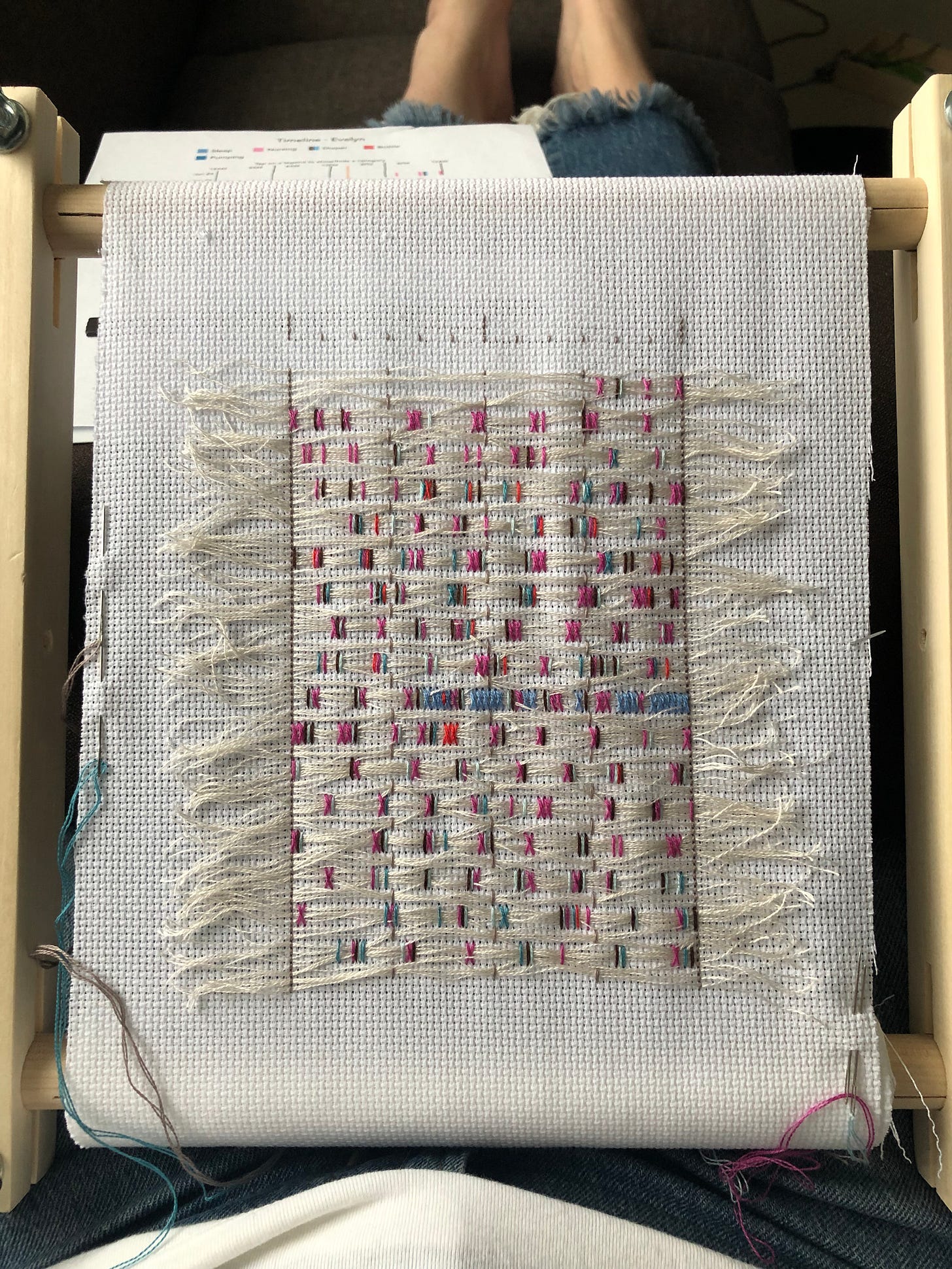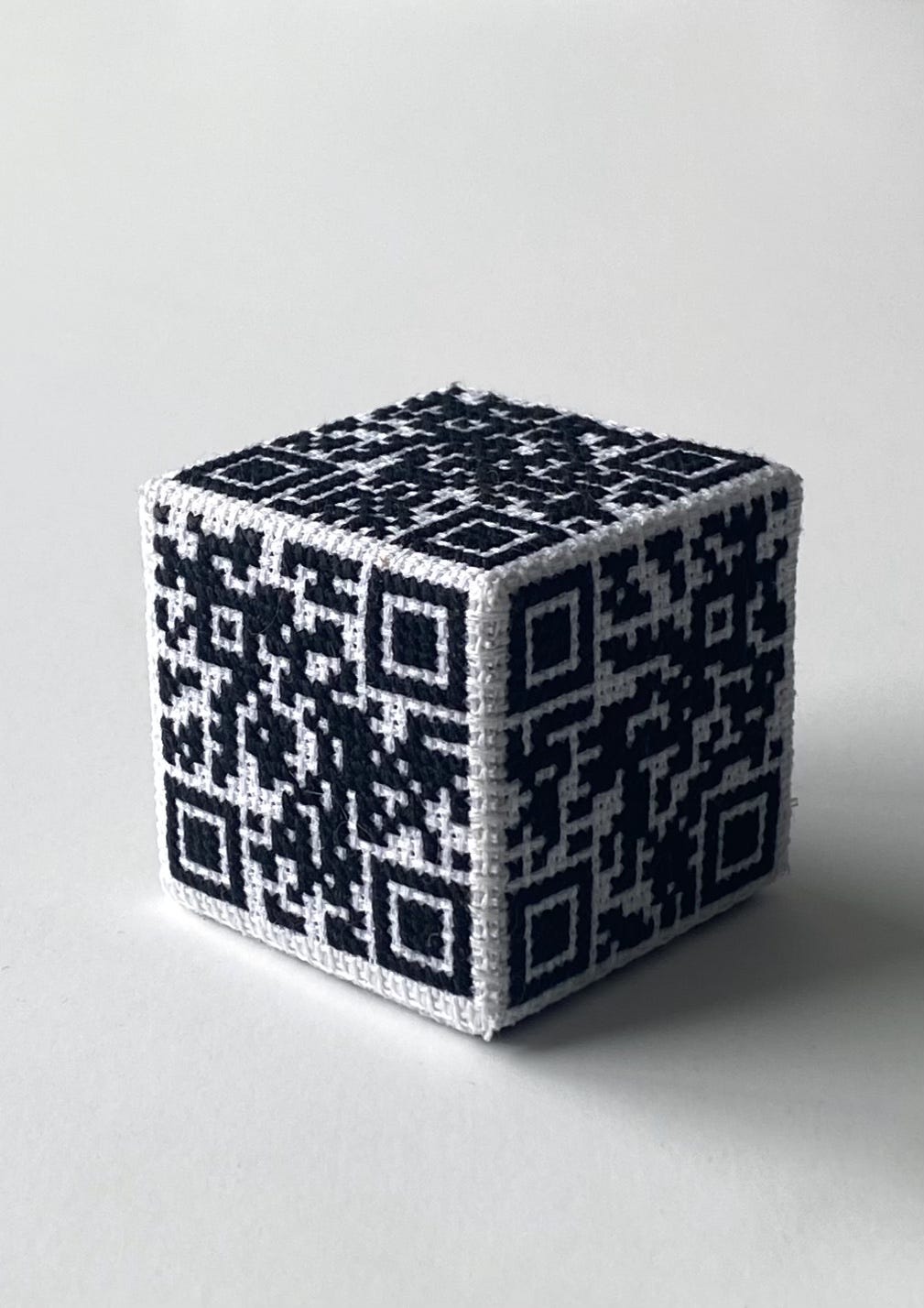Head’s up! Our first Ecotone gathering is this afternoon! Details on that are at the bottom of this post. But, to start, here’s my write-up on Sarah Wambold! …
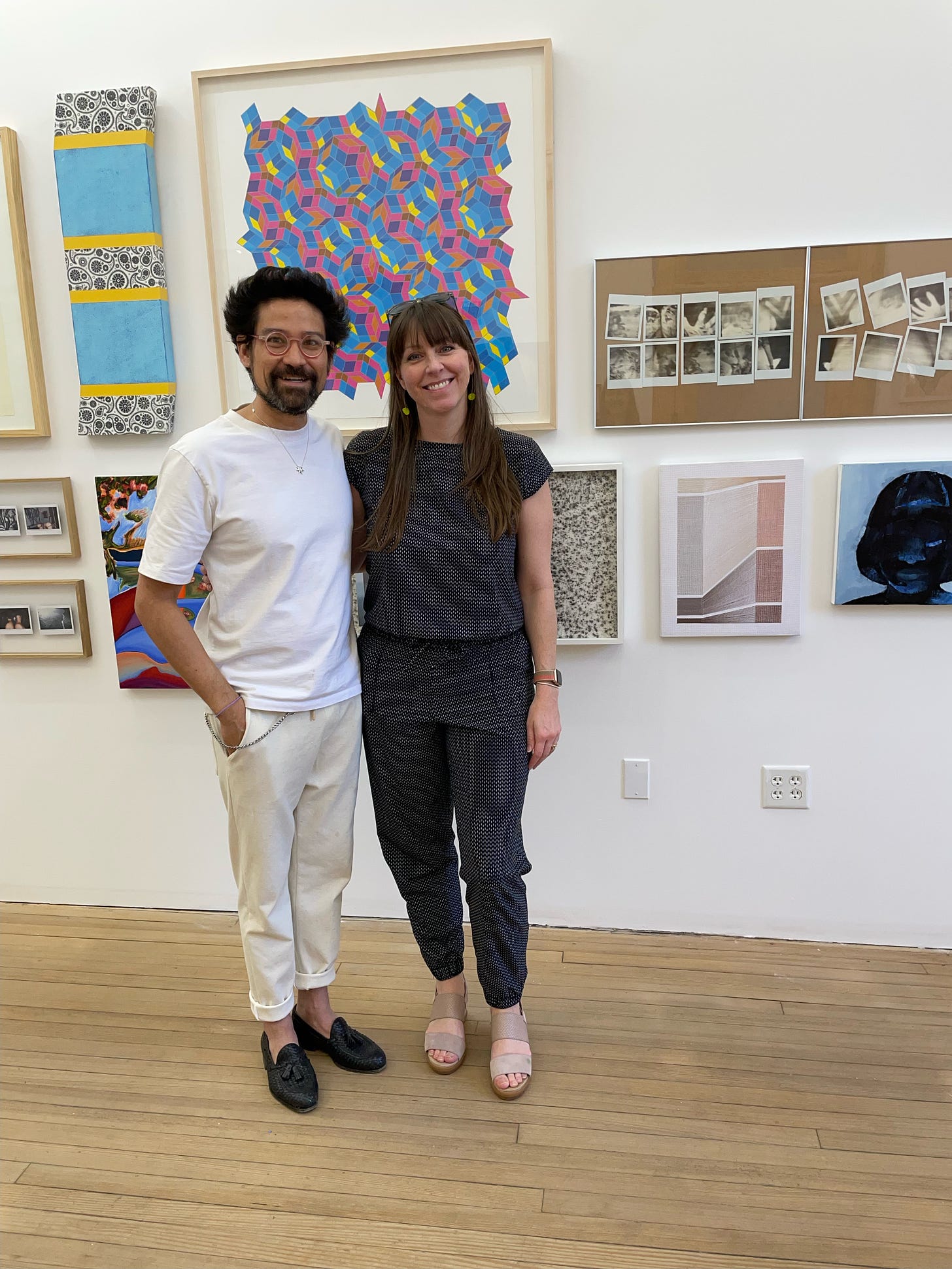
Around 2018 or 2019—memory and concept of time fail me now, like most of us since COVID entered our collective consciousness—I found myself in search of my “thing.” Whatever it might be that compelled me enough, or whatever my unique skill might be, in order to devote more of my working life to it.
During that time, I’d fallen deeply in love with the intersections of art and science, as a lot of my work still speaks to, but I wasn’t quite sure what “art” I might be particularly good at or fond of, and was curious if something I hadn’t yet tried could spark new ideas. After all, isn’t experimentation across disciplines how we find new and unique things to offer the world?
I’d done a lot of drawing in my life, had a bit of practice at painting through university mostly, and spent a good deal of my young adulthood locked happily alone in a darkroom, developing film I’d taken on cameras before digital took over.
So, come 2018/19, I went in search of something else—something even more tactile.
That’s how I came to sit next to Sarah Wambold at a local embroidery workshop. Immediate troublemakers and instant friends, we were the clear oddballs in the group, cursing and laughing while failing terribly at threading our needles while everyone else seemed to quietly and patiently pick up the new skill.
Or, at least I struggled. It became obvious quickly that cross-stitch was not only not my gift, but also not of real interest long-term. Sarah, on the other hand, seemed to fall for it right away. Still, her new love didn’t stop us from giggling throughout the rest of the event. DMs on Instagram ensued, a friendship blossomed, and Sarah eventually moved from her then role at the Clyfford Still Museum in Denver (producing many great things, including one of my absolute favorite audio storytelling pieces of all time) to her current position as Executive Producer at The Met.
Even in her new role, though, Sarah kept alive a dream I heard her consider early in our friendship: using cross-stitch to speak to pervasive problems in the art world and in our daily lives around invisible labor, the division of domestic labor, and issues of equity. She kept practicing, kept learning more about what she wanted to say with the work, and eventually started @dataviz.in.fiber, where she now mashes together cross-stitch, data visualization, and technology.
Here’s what she had to say when I recently asked her about the project.
Cross-stitching and data! I don’t think I’ve ever seen anyone who’s made this connection, though I admit my textile art knowledge is extremely limited. But I remember hearing your idea early on and freaking out a bit about how genius it was. Cross-stitching seems like such a logical (ha! a pun!) medium for data—stitches are kind of like binary code: each stitch is either “on” or “off.” What did you see, or what do you continue to see, as the connection between them?
Yeah, exactly—grids, order, math, code, design.
How did you come to find the intersections between these things or the idea of mashing them together?
I don’t remember how I came to think about embroidery and technology, but I spent a lot of time thinking about the gender associations with each—embroidery as women’s work, and technology as a man’s domain.
As I toyed with embroidering code (a year’s long attempt that didn’t yield any finished pieces), I began to see embroidery as design. The ideas continued to kick around in my head and then, during the pandemic, something clicked. I’ve always loved crafts and have been good with my hands. I learned to knit and crochet when I was seven. My mom taught me to cross-stitch at an early age, too. This was back when handcrafts were very, very uncool and before Brooklyn had produced any new-age hipsters.
So those skills and interests lay dormant during my high school and college years when I became interested in geometry, architecture, economics, and data visualization. (For the record, I pursued degrees in exactly none of those subjects, instead earning a Bachelor’s in journalism and a Master’s in arts management.) It was my arts management degree that led to a serendipitous start in museums, first as a publicist (hello, journalism degree) and then as a digital media producer, where I found myself surrounded by art, ideas, design, and technology.
Through my now-15-year career in visual arts and culture, I have learned about the complicated histories of crafts. The illegitimacy of craft as art. The privilege associated with embroidery. The legacies of gender bias—which can be added to my “lived experience” column, as well. I was able to soak in the ideas and aesthetics of Anni Albers, Sheila Hicks (a fellow Nebraskan!), Ruth Asawa, Louise Bourgeois, and Agnes Martin while encountering the fresh approaches of Jeffrey Gibson, Liza Lou, Nick Cave, Simone Leigh, Jordan Nassar, Bisa Butler, Sarah Sze, and Mika Tajima.
When the pandemic hit the U.S. and museums here closed, I was one of the lucky people able to keep working. While I was very grateful to have kept my job, it meant working long hours of endless Zoom calls from my dining room table while trying to entertain my three-year-old and help my fourth grader learn to type and log in to Zoom for school. My incredible husband and partner, who was also very fortunate to keep his job, battled the days with me.
At night, I would doom-scroll and I became angry about the disproportionate ways the pandemic was impacting women and caretakers, and I needed to do something with that frustration. You can only scream into the void so many times before you need to repair yourself. I wanted to make things with my hands. I wanted something meditative to get out of my own head for a while. And I found myself thinking of grids, and data, and design, while wanting to hold a needle and thread in my fingers.
What's your favorite or a fun interesting fact you love about cross-stitching and data, or related to your work?
Technology’s intrinsic association with craft goes beyond the use of tools, and I love encountering new ways that bears out. Like the use of punch cards to control both Jacquard looms and, much later, IBM computers. Or the shared aesthetics of cross-stitch embroidery and bitmaps. I love how much math and geometry go into pattern making, and how much deciphering and decoding go into reading patterns.
What do you think drives your work, what do you want people to know, or what do you find so important about doing this work?
My ideas start as problems to solve, which might mean big, complex, intractable, societal problems like the toll of invisible labor. Then they become stories to communicate, which transforms these big, difficult, unapproachable problems into visual design problems that I can start to solve in my head. The agency and sense of order and control I gain from this practice continue to repair me.
Do you make money doing this?
I haven’t made any money at it yet! I can’t speak to what it’s like to be a young artist. I started making this work in my 40s, in a circumstance where I feel no pressure to be anything or be anywhere that I’m not. I’ve worked very hard and been very fortunate in my museum technology career, which has paid my bills through the years. As my kids get older and I slowly gain back more of my own time, the ability to give an idea physical form excites me.
Stuff Sarah would love you to check out:
I have a new work in an exhibition at Colorado State University, opening on January 18. The show is called Micrologies. My work is called “Pink Collar Ghetto” and is a large die with QR codes on the faces.
This isn’t my art, but a podcast I recently produced at The Met is called “Immaterial: 5,000 years of art, one material at a time.” (Note from Brandi: Sarah is an insanely good storyteller and media producer—hence her job at The Met, of course—but I particularly love this podcast because it shows you how much the “matter,” the materials of our lives, are intimately connected to culture, and history, and are inseparable from our personal stories…from class status to migration, to innovation throughout history, to war and struggle, and so much more. It also happens to be narrated by the brilliant Camille T. Dungy, the poet, non-fiction writer, and professor. Listen below and please do subscribe.)
One of my pieces appeared in The Met’s first-ever public exhibition of art created by museum staff. Here’s a CNBC piece on the show, with an art cameo of one of my pieces in the background at :44!
I have nothing to do with this exhibition, but I love it so much and it’s closing soon: Making Knowing: Craft in Art, 1950–2019.
And, Tilt West, an organization I co-founded, publishes online journals that are awesome and free! (Edit from Brandi: If you’re a fan of This Plus That, Tilt West will be your jam, too. Each publication or public roundtable they host mashes “art” together with another topic, always using art as a lens through which to look at important ideas or cultural topics.)
Lastly, who's one other person, project, or idea that's connecting "seemingly un-connectable" things?
Ahree Lee does incredible work at the intersection of craft and technology.
Go check Sarah out at her website and, of course, follow her on Instagram.
Upcoming This Plus That things:
Join me at 4pm MT today for the FIRST-EVER Ecotone gathering. As a refresher, or in case you’re new here, I’ll be hanging out online for an hour or so to talk about all things This Plus That—the podcast, my essays, other people connecting the seemingly un-connectable—or art, creativity, and life things with you, in general.
If you could use some community, friends who love mashing things together as you do, or would be pumped to finally have me and others to talk about the podcast or anything else This Plus That with, come join! Paid subscribers can find Zoom info & the ability to add the recurring event to your calendar here.
If you can’t join, I’m planning to post the recordings of these gatherings to The Ecotone section of my Substack, along with bullet points of what we discussed, so you can decide if you’d like to watch the replay later.
Lastly, if 4pm on the 2nd Tuesday of each month isn’t typically a good time for you, would you let me know when would be a better time to make it to these gatherings?
Okay, that’s it—
Hope to see you there!
As always, with you in the mystical middle spaces,
— Brandi


